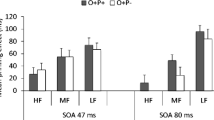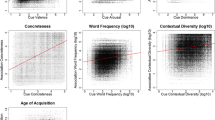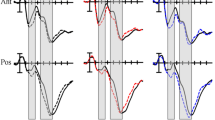Abstract
The present study provides a further investigation of the neighborhood-frequency effect. Using the masked priming procedure, we found that the neighborhood-frequency effect is obtained not only with primes and targets of the same length but also with primes and targets of a different length. This result is not compatible with most current versions of the interactive activation model. Implications of the finding are discussed.
Similar content being viewed by others
Author information
Authors and Affiliations
Additional information
Received: 25 January 1999 / Accepted: 7 July 1999
Rights and permissions
About this article
Cite this article
De Moor, W., Brysbaert, M. Neighborhood-frequency effects when primes and targets are of different lengths. Psychological Research Psychologische Forschung 63, 159–162 (2000). https://doi.org/10.1007/PL00008174
Issue Date:
DOI: https://doi.org/10.1007/PL00008174




